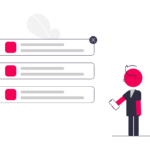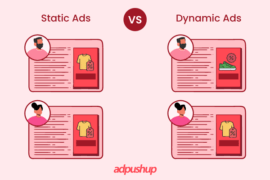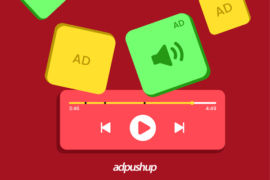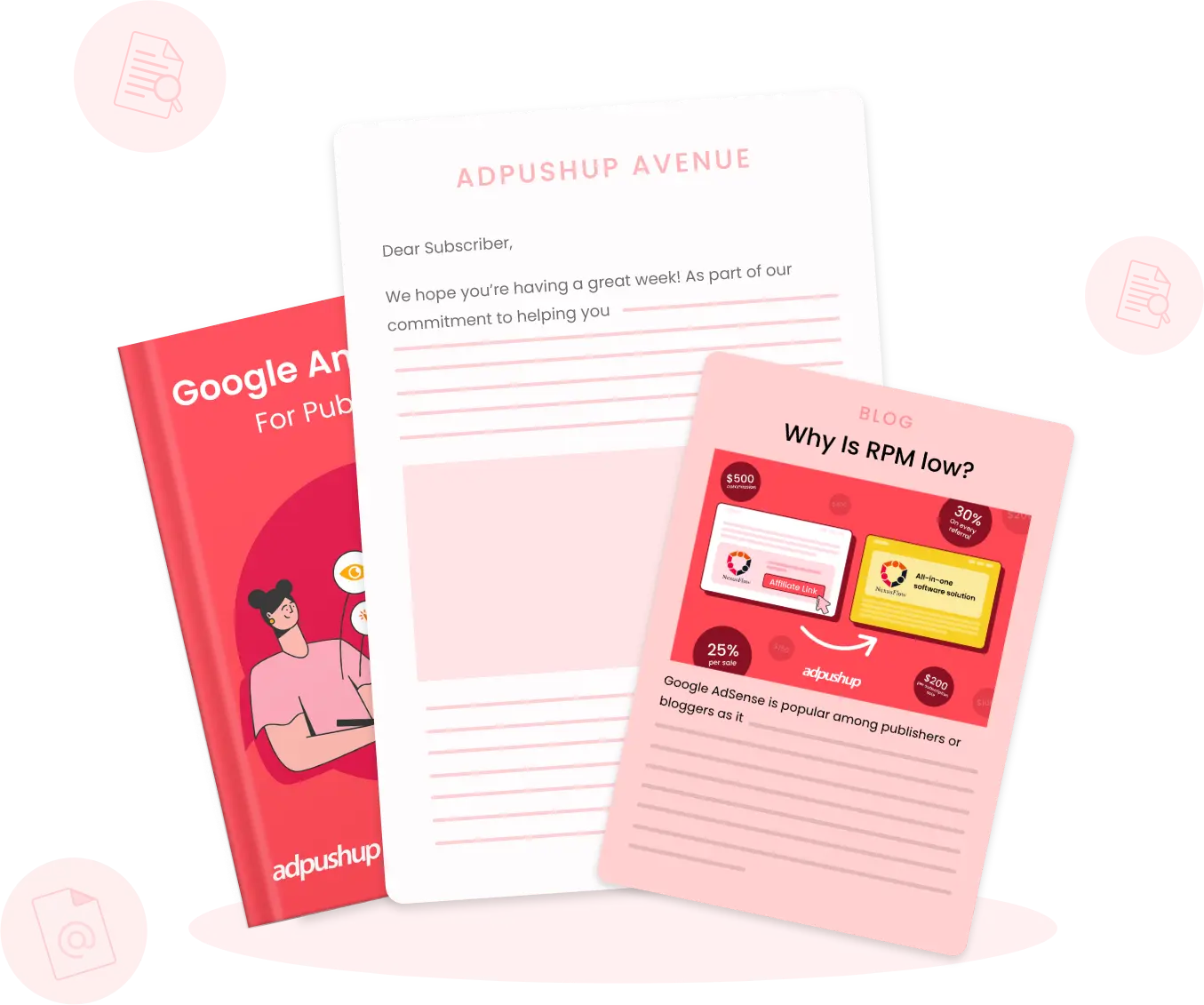This guide will provide you with a comprehensive overview of programmatic buying and give you the tips and techniques you need to become a master of the process.
The world of digital advertising has been continually evolving, paving the way for easier and faster advertising solutions for publishers and advertisers. All thanks to the programmatic advertising.
Programmatic advertising is a complex and ever-evolving field, but programmatic buying is one of the key concepts that makes it all possible.
Thus, as a publisher, you must master the art of programmatic buying in order to elevate your ad revenue to greater heights. This allows you to reap the maximum benefits of programmatic advertising, which is still growing at a fast pace.
- In fact, programmatic advertising is expected to account for over 80% of all digital ad spending in the United States by 2024.
- According to a report by Statista, programmatic digital display advertising expenditures will reach nearly 142 billion U.S. dollars in 2023.
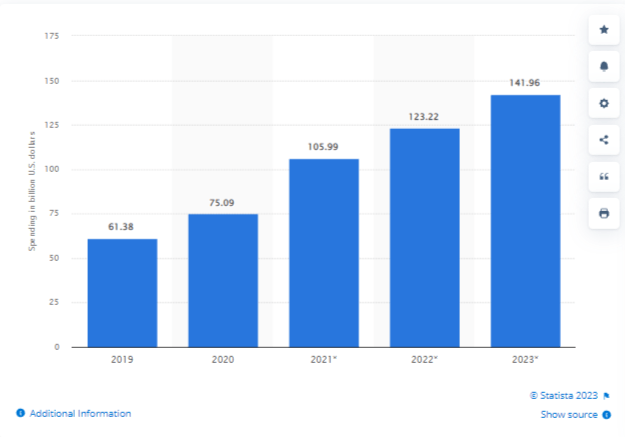
Now let’s cut to the chase and first understand what is programmatic buying.
What is Programmatic Buying (programmatic buying definition)?
“What is programmatic ad buying” is one of the most frequently asked questions.
Well, to discuss about programmatic buying definition – programmatic buying refers to the use of technology to automate the buying and selling of online advertising. It allows businesses to target specific audiences, optimize their ad campaigns in real time, and measure their results.
Programmatic buying uses algorithms to analyze data and make decisions about which ads to show to which users based on factors such as their location, browsing history, and demographic information.
Now that you know what is programmatic media buying, let’s understand the types of programmatic buying.
Why Programmatic Buying is Important?
Gone are the days when both parties, publishers, and advertisers manually reached out to each other for the ads serving. The process was time-consuming and often complicated. This included searching for the relevant people, sending proposals, negotiating, manually doing the insertion orders, and a lot more.
Since the inception of programmatic advertising, things have become a lot easier. It has brought with it ad automation, which saves time and works effectively.
How Programmatic Buying Works?
To understand how programmatic buying works, we need to understand its 3 primary components, which are:
- Sell side platform (SSP)
- Demand Side Platfrom (DSP)
- Ad Exchange
Let’s take a closer look at each of them.
Sell Side Platfroms (SSPs)
A supply side platforms, also commonly known as the sell-side platform is used by publishers to sell their ad space or ad inventory to advertisers. This is done collaboratively with the help of DSP (Demand Side Platform), Ads Exchange, and ad networks. SSPs also assist publishers with multiple activities such as the distribution of ad space, managing the supply, yield optimization, analytics & reporting, and a lot more.
Demand Side Platforms (DSPs)
On the other side of the fence is a demand side platform, which is used by advertisers and ad agencies. This enables them to buy publishers’ ad inventory. It’s a single platform for the advertisers to manage multiple ad exchanges. To make it happen, a DSP must plug into the SPP first to make the buying/selling possible.
Ad Exchange
Now Ad Exchange is what makes the SSP and DSP integration possible. It facilitates the ads buying and selling for both publishers and advertisers.
First, publishers feed their ad inventory to the ad exchange and then DSPs come into the picture. A DSP connects with these ad exchanges, allowing the advertisers, agencies, or any buyers to purchase the ads.
What are the Types of Programmatic Buying
Programmatic buying consists of 3 buying processes, which are:
1. Real-Time Bidding (RTB)
Real-time bidding (RTB) is a form of programmatic buying that involves the auction of ad inventory in real-time. When a user loads a webpage, the ad server sends out a request for bids from advertisers.
The winning bid is then displayed to the user. The process of real-time bidding allows for highly targeted and personalized advertising and allows businesses to bid on specific audiences, ad placements, and ad formats.
2. Programmatic Direct
Programmatic direct involves the direct negotiation and buying of ad inventory between a business and a publisher. It allows businesses to purchase specific ad placements and targeted audiences in advance rather than bidding on them in real time.
Programmatic direct can be more efficient and cost-effective than RTB (real-time bidding)), but it may be less flexible and offer fewer targeting options.
Now that you are well-versed in the programmatic ad types let’s dive right into the best practices to master programmatic buying.
3. Private Marketplace
Contrary to how real-time bidding works, PMP (Private Marketplace) is a type of auction which is open to select buyers. This kind of auction is limited to invited participants. Publishers usually conduct PMP deals to have more control and flexibility over the terms of selling their ad inventory.
What are The Advantages of Programmatic Buying?
There are several distinct advantages that programmatic buying has over other, less advanced methods of purchasing advertising.
- One of these benefits is that it produces completely transparent pricing. Buyers can decide exactly how much they are willing to bid for impressions.
- The most powerful advantage, of course, is that ads are shown to specific people rather than simply displayed on websites.
- No matter how relevant a certain website might be for an ad, there is always the question of whether the right visitor will show up and click on it.
- With a programmatic buying campaign, however, the advertiser can be certain that the person who sees the ad has at least some proven interest in the product.
- To put it in slightly different terms, programmatic buying lets the advertiser display ads to people who are already at least partially pre-sold on the product.
While no type of advertising is foolproof, in this scenario, there is some history between the visitor and the brand. This often makes for substantially better click-throughs and conversions than with other types of advertising.
How to Get Started with Programmatic Buying?
Here’s how you can get started with programmatic buying:
1. Setting Up Your KPIs for Programmatic Advertising
Your performance goals are like the North Star for your programmatic ad campaign settings. They’ll help you determine what you need to do in order to achieve the results you desire.
For example, if your goal is to get more sales, you’ll want to choose the most relevant audience type and create a personalized creative message.
Here are the main factors to consider when setting up KPIs for programmatic buying in programmatic advertising in 2023:
- Align with advertising objectives and target audience demographics
- Consider ad inventory types
- Take campaign duration into account
- Use industry benchmarks as a guide
- Implement data collection and analysis systems
- Ensure that the KPIs are scalable and adaptable to changing needs
- Regularly evaluate and review KPIs for performance
- Use SMART criteria (Specific, Measurable, Achievable, Relevant, Time-bound)
Ultimately, the key performance indicators you set for programmatic buying will depend on the specific goals of your campaign and the target audience you’re trying to reach. It’s important to set KPIs that are specific, measurable, achievable, relevant, and time-bound (SMART) for effective programmatic advertising.
Also Read: Which Ad Revenue Metrics Should Publishers Track?
2. Get Familiar with Different Ad Inventory
Programmatic advertising involves a wide variety of ads. In programmatic buying, you can purchase different types of ad inventory. Some of the most common ones are –
- Display Ads
- Video Ads
- Mobile Ads
- Native advertising
Understanding the different types of ad inventory available to you will help you make better-informed decisions when buying ad space.
3. Have a Clear Targeting Strategy
When you’re buying ad space programmatically, have a clear ad targeting strategy in place. This means understanding who your target audience is and what types of websites or apps they are most likely to visit.
By having a clear targeting strategy, you’ll be able to purchase ad space that is more likely to be seen by your target audience. This will help increase the effectiveness of your programmatic advertising.
Once you’re done creating a strategy, be sure to test it and check whether or not it’s working in your favour. For that, employ the use of A/B testing.
Also referred to as split testing, A/B testing is performing the comparison of two versions of anything. For example, comparing two ad types or comparing ad copies to find out what drives the most results.
Programmatic buying allows you to run A/B tests and experiment with different targeting strategies, ad placements, and creatives. Use this to your advantage and test different options to find out what works best for your programmatic advertising campaigns.
4. Choose a Demand-Side Platform (DSP)
After you’ve set your KPIs, understood different programmatic ad types, and made a clear strategy, it’s time to single out a reliable demand-side platform.
Choosing a Demand Side Platform is one of the major parts of programmatic buying, as it helps you keep your ad spending in check. A DSP acts as a middleman between the publishers and advertisers.
DSP campaigns are all about competition. Advertisers specify their bid amount, and then they compete against others in the same pool for the available inventory. The one with the highest bid wins the impression.
With the help of a demand-side platform, you can
- Access a wide range of ad inventory from various ad exchanges
- Bid on ad inventory in real-time
- Target your audience with precision
- Integrate data from multiple sources
- Optimize campaigns in real-time
- Make cost-effective purchases
- Ensure brand safety
In summary, a DSP is a platform that allows you to access and bid on a wide range of ad inventory, target your audience with precision, and optimize campaigns in real time.
Furthermore, it helps you make cost-effective purchases and ensure brand safety.
Here are some of the top DSPs you can opt for in 2023:
DSPs, or demand-side platforms, are growing in popularity among publishers – and for a good reason. According to a study done by Future Business Insights, the global demand side platforms market is projected to grow from USD 20.77 billion in 2022 to USD 92.12 billion by 2029.
That’s a huge jump! And it just goes to show how beneficial these platforms can be for businesses.

5. Use Data and Analytics to Optimize your Campaign
Programmatic ads are only as good as the data they’re based on. Without quality data, these ads will be ineffective and won’t help you boost sales. To get the most out of your programmatic ad campaigns, make sure you’re using quality data that will give you valuable insights into your target customers.
With programmatic buying, you can collect and analyze a large amount of data on your ad campaigns.
There are several ways that you can use data and analytics to optimize your programmatic campaigns:
Audience Targeting
You can use data to segment your audience with ad targeting with tailored messaging. For example, you can target users who have previously visited your website or shown interest in your products.
Bid Optimization
You can use data to optimize the bids for your ads based on factors such as the expected conversion rate and the historical performance of similar ads. This can help you get more visibility for your ads and improve your return on investment.
Frequency Capping
By analyzing data on how often a user has seen your ads, you can set limits on how often an ad is shown to the same user to prevent ad fatigue.
Moreover, you can also use the data for creative optimization and performance reporting for your programmatic ads performance.
6 . Stay Up to Date With Industry Trends
The programmatic advertising industry is constantly evolving, and new technologies and practices are being developed all the time. It’s important to stay up to date with the latest trends and developments of programmatic ads to ensure that your programmatic buying strategies are current and effective.
Is Programmatic Buying the Future of Advertising?
There are compelling reasons to believe that programmatic buying is far more than a trend that is currently popular among online advertisers and publishers. Notably, more and more programmatic buying platforms are also being introduced in the industry. It has incorporated real-time bidding, a practice that has actually been in place for several years now. As the internet becomes ever more populated, marketers are seeking ways to reach consumers in the most effective possible manner.
As popular as programmatic buying is right now, it’s also important to master programmatic buying It takes time and effort, but by following these tips, you’ll be well on your way to becoming a programmatic buying pro.
With a solid understanding of the basics, the different types of programmatic buying, ad inventory, and effective ways to target your audience, you will be able to purchase the most effective ad inventory at the best possible prices.
FAQs – Programmatic Buying
Programmatic ad buying is a method of purchasing digital advertising inventory through automated processes. It involves the use of software and data to target specific audiences and real-time auction dynamics to buy ad space on websites or through demand-side platforms.
The four main components of programmatic advertising are:
1) Demand Side Platform (DSP)
2) Supply Side Platform (SSP)
3) Data Management Platform (DMP)
4) Ad Exchange
Each of these plays an important role in allowing advertisers to buy and sell ad space on websites and mobile apps.
Programmatic buying refers to the use of technology to automate the buying, placement, and optimization of digital advertising.

Deepak has a keen eye for detail and a deep understanding of the ad tech landscape. Whether it’s through in-depth articles, thought-provoking insights, or compelling storytelling, he’s dedicated to helping people navigate the complex world of ad tech with the simplicity of his words.


